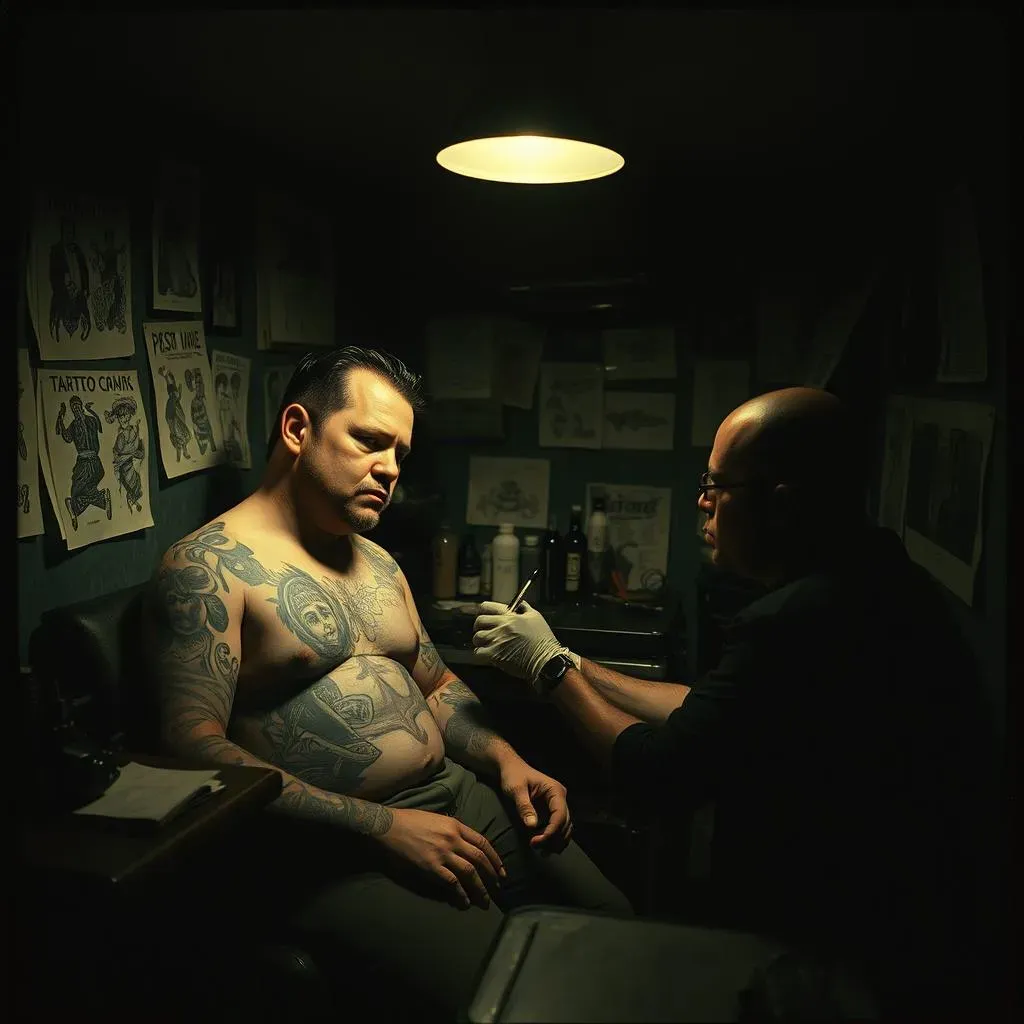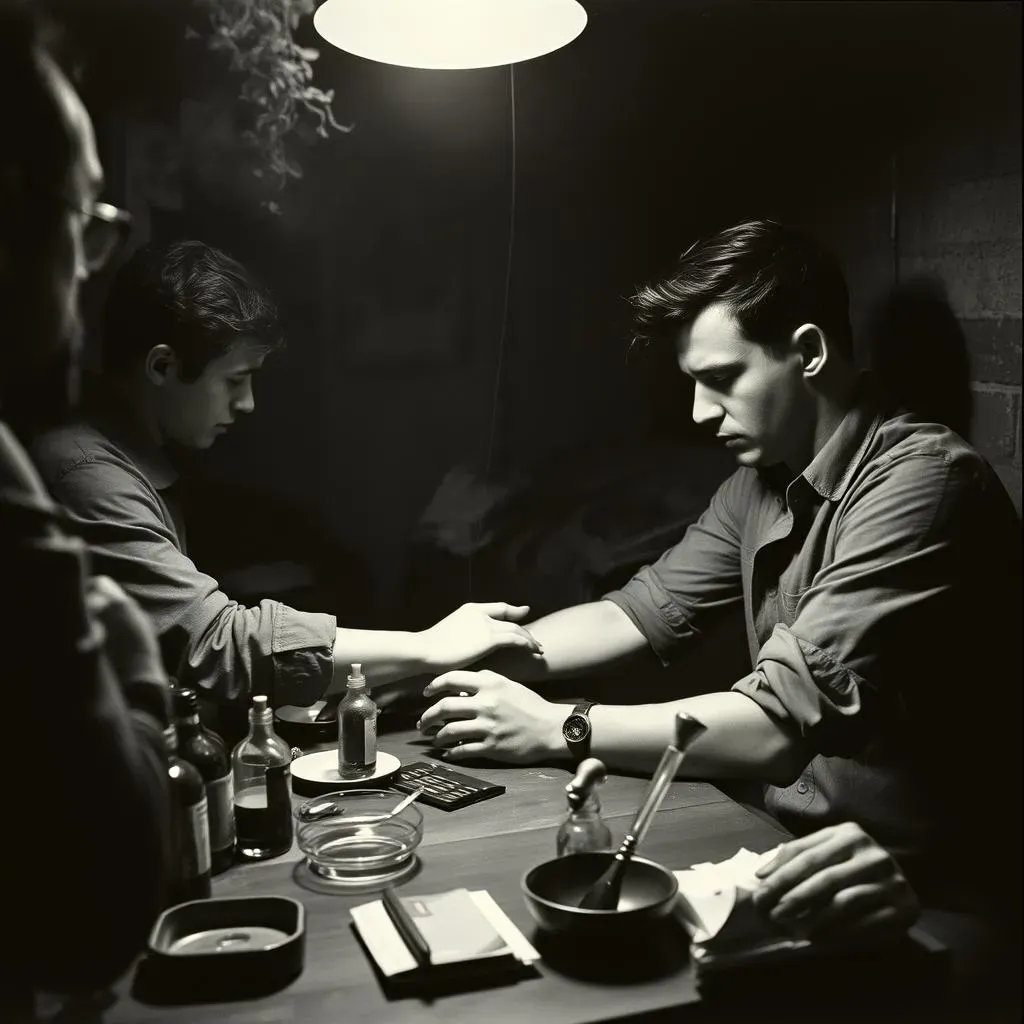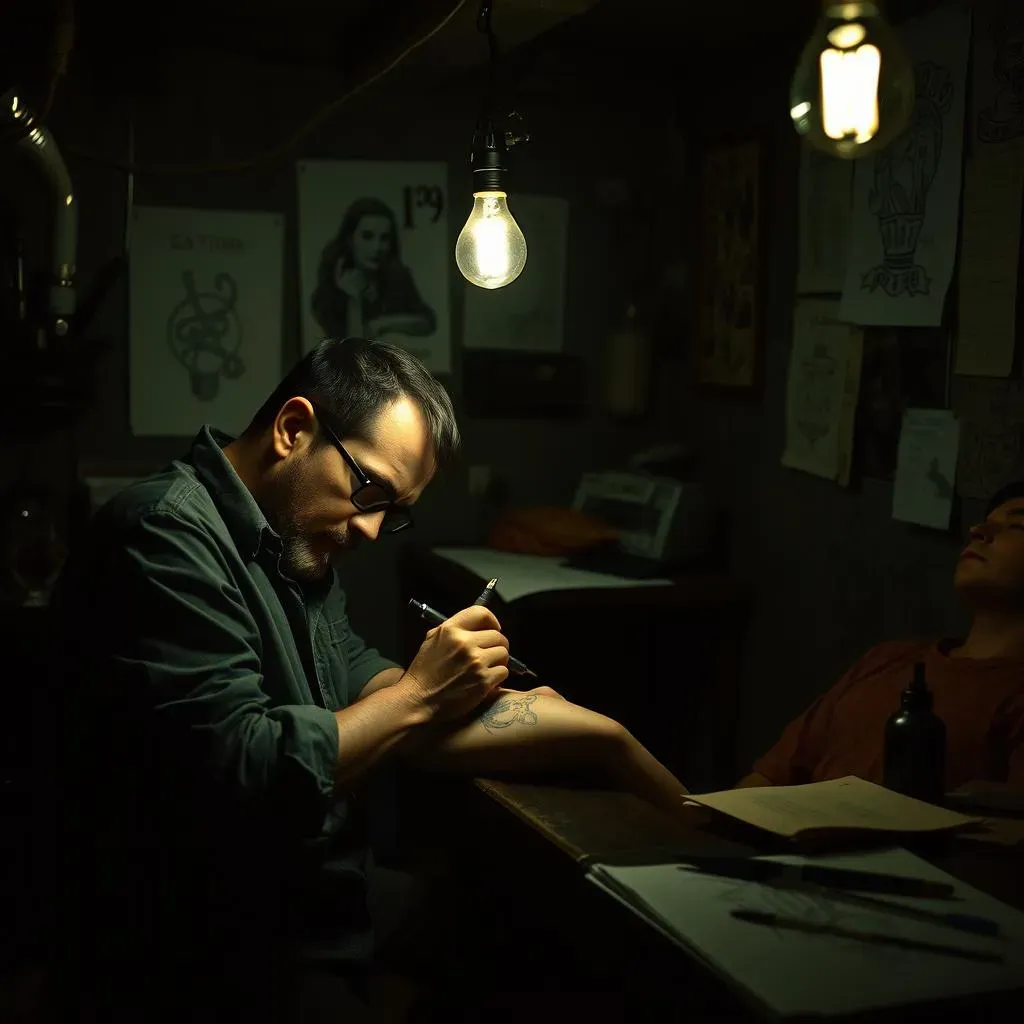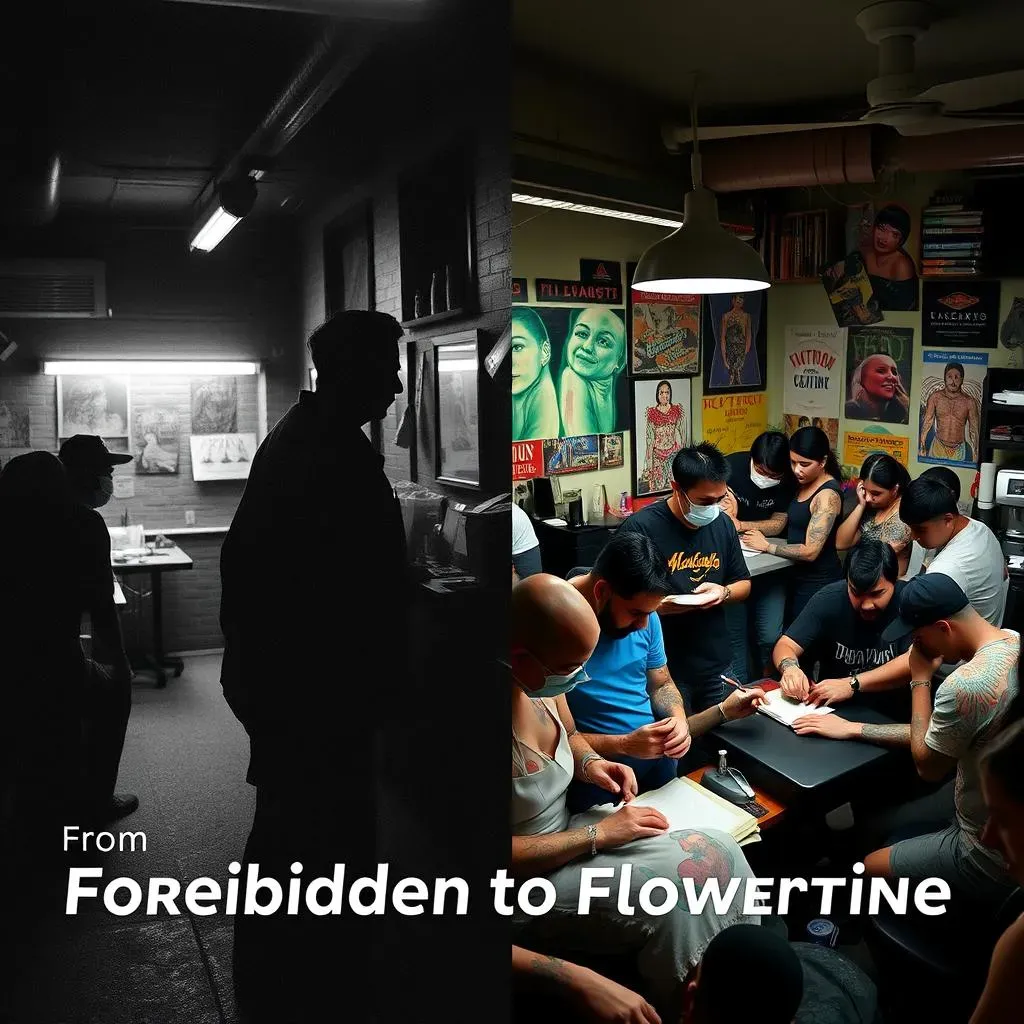Table of Contents
Body art has a long and vibrant history, but there was a time when the buzz of the tattoo machine was silenced by the long arm of the law. Believe it or not, there were places where was tattooing illegal, pushing artists and enthusiasts into the shadows. This isn't just about rebellious teens and societal disapproval; the reasons behind these bans are as varied as the ink swirling beneath the skin. From public health scares to attempts at controlling cultural expression, the story of outlawed ink is a fascinating look at how society views art, the body, and individual freedom. Get ready to explore the hushed history of underground studios, the reasons behind the bans, and the eventual resurgence of tattoo culture into the mainstream. We're diving deep into when and where was tattooing illegal, uncovering the stories of those who defied the rules and the impact these bans had on the vibrant world of tattoo art. So, let's peel back the layers of history and reveal the hidden narrative of ink and law.
The Ink Underground: Exploring When Tattooing Was Illegal
The Ink Underground: Exploring When Tattooing Was Illegal
The Shadows of Silence: Unveiling the Bans
Imagine a world where the electric hum of a tattoo machine is replaced by hushed whispers, where flash sheets are hidden under floorboards, and the only way to get inked is through a secret knock on a back door. That was the reality in many places when tattooing was outlawed. These weren't just small towns clinging to old-fashioned values; major cities, including New York City, made the practice illegal for decades. The reasons behind these bans were complex, often shrouded in a mix of genuine public health concerns and moral anxieties. It wasn't always about crime or delinquency, but more about control and perception.
The history of tattooing bans isn't just a legal footnote; it's a reflection of societal fears and changing attitudes towards body modification. These laws weren't enacted in a vacuum. They were often a product of specific historical moments, fueled by anxieties about disease, hygiene, and the perceived "otherness" of tattooed individuals. Understanding the context surrounding these bans is crucial to understanding why they happened and what impact they had on the tattoo community.
Reason for Tattoo Bans | Description |
|---|---|
Public Health Concerns | Fears of spreading diseases like Hepatitis B, especially with less stringent hygiene practices. |
Social Perception | Association of tattoos with marginalized groups, sailors, criminals, and "outsiders." |
Moral Objections | Beliefs that tattoos were a form of defacement or a sign of moral decay. |
Life in the Shadows: The Secret World of Illegal Ink
So, what was it like to get a tattoo when was tattooing illegal? Think speakeasies, but with needles and ink. Tattoo artists operated in the shadows, often in clandestine studios tucked away in basements or back rooms. Getting a tattoo became an act of rebellion, a secret shared between artist and client. The risk of getting caught added an extra layer of excitement (and anxiety) to the experience. These underground studios weren't exactly known for their pristine conditions, so getting a tattoo was something of a gamble.
Despite the risks, the underground tattoo scene thrived. The illegality of tattooing didn't kill the art form; it simply forced it into a different realm. It fostered a sense of community among those who dared to defy the law. These were places where creativity flourished, where artists experimented with new styles and techniques, and where clients could express themselves in ways that were deemed unacceptable by mainstream society. The story of was tattooing illegal is not just about suppression; it's also about resilience and the enduring power of art.
"The best things in life are often found in the most unexpected places." - A wise, albeit anonymous, tattoo enthusiast
NYC's Tattoo Taboo: The History of When Tattooing Was Illegal in the City
NYC's Tattoo Taboo: The History of When Tattooing Was Illegal in the City
From Sideshows to Shadows: Tattooing's Early Days in NYC
New York City, a melting pot of cultures and trends, wasn't always so welcoming to the world of tattooing. In the early 20th century, tattoos were largely associated with sideshow performers, sailors, and the working class. Tattoo parlors clustered around the Bowery, offering cheap and often crude designs. The city viewed these establishments with a mixture of fascination and disdain. This perception set the stage for the eventual ban. It wasn't seen as high art, more like a gritty, lowbrow form of expression.
As the city grew and sought to project a more refined image, the tattoo scene became a target. Concerns about hygiene and the spread of disease were legitimate, but there was also an element of social cleansing at play. The city wanted to clean up its act, and that meant pushing the "undesirables" and their associated practices out of sight. This wasn't a sudden decision, but rather a gradual shift in attitude that culminated in the 1961 ban.
Think of it like this: NYC was trying to become a sophisticated socialite, and tattoos were seen as that embarrassing relative you try to hide during parties. It wasn't just about health; it was about appearances. The city was prepping for the 1964 World's Fair, and officials wanted to present a squeaky-clean image to the world. Tattoos didn't exactly fit that picture.
The 1961 Ban: A Line in the Sand
In 1961, New York City officially made was tattooing illegal. The stated reason? A hepatitis B outbreak linked to unsanitary tattoo practices. While the health concerns were real, many believe the ban was also driven by a desire to sanitize the city's image. The ban wasn't just a slap on the wrist; it was a complete prohibition, making it illegal to give or receive a tattoo within city limits. This wasn't just a minor inconvenience; it was a full-blown cultural earthquake.
The ban sent tattoo artists scrambling. Some packed up and moved to neighboring states, while others went underground, operating in secret studios and private homes. The city's vibrant tattoo scene didn't disappear; it simply went into hiding. This created a fascinating dynamic, where getting a tattoo became an act of defiance, a secret ritual performed in the shadows.
The ban was a turning point. It marked a clear divide between the mainstream and the tattoo community. It forced artists and enthusiasts to become more resourceful, more secretive, and more dedicated to their craft. It's kind of like prohibition; it didn't stop people from drinking, it just made it more exciting (and potentially dangerous).
Here's a glimpse into the key players and their roles during the ban:
- City Officials: Focused on public health and city image, leading to the ban.
- Tattoo Artists: Forced to adapt, moving underground or relocating.
- Tattoo Enthusiasts: Continued to seek out tattoos, often in secrecy and at greater risk.
Living Underground: Tales from the Ink-Black Market
Life under the tattoo ban wasn't easy. Artists faced the constant threat of raids and fines. Clients risked arrest and potential health complications from unsanitary conditions. Yet, the underground tattoo scene thrived. Word-of-mouth was king, and getting a tattoo required knowing the right people and keeping your mouth shut. These weren't your fancy, sterile studios; they were often makeshift operations in apartments, basements, or even vans.
Despite the risks, the quality of work remained surprisingly high. Many talented artists continued to hone their skills in secret, passing down their knowledge to a new generation of ink slingers. The underground scene fostered a sense of community and camaraderie, a shared passion for an art form that was deemed illegal. It's a testament to the dedication and resilience of the tattoo community that it survived, and even flourished, under such difficult circumstances.
The underground scene wasn't just about tattoos; it was about community, rebellion, and self-expression. It was a place where people could be themselves, free from the judgment and restrictions of mainstream society. The ban may have tried to suppress tattoo culture, but it ultimately made it stronger and more vibrant.
Life Under the Needle Ban: Stories from the Era When Tattooing Was Illegal
Life Under the Needle Ban: Stories from the Era When Tattooing Was Illegal
Whispers and Ink: The Culture of Secrecy
Imagine a world where getting a tattoo felt like joining a secret society. That's what life under the needle ban was like. Every session was shrouded in secrecy, a clandestine meeting between artist and client. You didn't just walk into a brightly lit studio; you had to know someone who knew someone. Word-of-mouth was the only advertising, and trust was the most valuable currency. It was a culture built on discretion, loyalty, and a shared passion for an art form that was deemed illegal.
These weren't just random hookups for some quick ink; they were carefully orchestrated events. Think coded phone calls, hidden entrances, and a constant awareness of your surroundings. The risk of getting caught added a thrill to the experience, a sense of rebellion that made the final product all the more meaningful. It wasn't just about the tattoo; it was about the story behind it, the shared experience of defying the law and embracing a forbidden art.
Here's a glimpse into the typical steps one might take to get a tattoo during the ban:
- Find a Connection: Get a referral from a trusted friend or acquaintance.
- Make Contact: Discreetly call or visit the artist, often using code words or vague language.
- Arrange the Session: Schedule a time and place, usually a private residence or hidden studio.
- Keep it Secret: Avoid discussing the tattoo with anyone who isn't "in the know."
The Artists' Perspective: Creativity in Confinement
The artists who dared to practice their craft during the ban were a special breed. They weren't just skilled technicians; they were rebels, risk-takers, and passionate advocates for their art. Many had to learn their trade in secret, often without formal training or access to the latest equipment. They relied on ingenuity, resourcefulness, and a deep love for tattooing to overcome the challenges they faced. Life under the needle ban forced them to become more creative, more innovative, and more dedicated to their craft.
These artists weren't in it for the money or the fame; they were driven by a desire to create, to express themselves, and to connect with others through their art. They saw tattooing as more than just a job; it was a calling, a way to leave their mark on the world. The ban may have tried to silence them, but it only made their voices stronger and their art more meaningful.
A quote from a legendary NYC tattoo artist who operated during the ban:
The Ink Speaks Volumes: Stories Etched in Skin
Every tattoo has a story, but those inked during the ban carry an extra layer of meaning. They represent not only personal expression but also an act of defiance against societal norms. These weren't just impulse decisions; they were carefully considered choices, made with the knowledge that they could have serious consequences. Life under the needle ban meant that every tattoo was a statement, a symbol of rebellion, and a testament to the enduring power of art.
These tattoos weren't just about aesthetics; they were about identity, belonging, and self-expression. They were a way for people to reclaim their bodies, to challenge authority, and to connect with others who shared their values. The ban may have tried to suppress tattoo culture, but it only made it more meaningful and more powerful.
Consider this table showcasing the types of tattoos favored during the ban and their potential meanings:
Tattoo Style | Potential Meaning |
|---|---|
Traditional Americana | Nostalgia, rebellion against conformity. |
Simple, Bold Designs | Easy to conceal, symbolic of underground culture. |
Custom, Unique Pieces | Personal expression, defiance of mainstream aesthetics. |
From Forbidden to Flourishing: The Aftermath of When Tattooing Was Illegal and the Modern Tattoo Renaissance
From Forbidden to Flourishing: The Aftermath of When Tattooing Was Illegal and the Modern Tattoo Renaissance
The Ink Flows Free: The Lifting of the Ban
After 36 long years, the tattoo ban in New York City was finally lifted in 1997. Mayor Rudy Giuliani, of all people, signed the legislation that made From Forbidden to Flourishing: The Aftermath of When Tattooing Was Illegal and the Modern Tattoo Renaissance a reality. The reasons for the reversal were a mix of factors, including a growing recognition of tattooing as an art form, a desire to regulate the industry and ensure public safety, and a realization that the ban was simply unenforceable. It wasn't an overnight transformation, but it was a monumental step forward for the tattoo community.
The lifting of the ban didn't just legalize tattooing; it legitimized it. It brought the art form out of the shadows and into the mainstream. It allowed artists to operate openly and honestly, to attract new clients, and to contribute to the city's vibrant cultural landscape. It wasn't just about ink; it was about freedom, expression, and the recognition of tattooing as a legitimate art form.
Think about it: For decades, tattoo artists were forced to hide, to operate in secrecy, to risk arrest and fines. Now, they could finally practice their craft without fear, to display their art proudly, and to be recognized for their talent and skill. It was a moment of liberation, a celebration of creativity, and a testament to the enduring power of art.
Here's a quick rundown of the key events leading to the ban's end:
- Growing Public Acceptance: Increased visibility and appreciation of tattoo art.
- Lobbying Efforts: Advocacy by tattoo artists and enthusiasts.
- Legal Challenges: Arguments that the ban was unconstitutional.
- City Recognition: Realization that regulation was more effective than prohibition.
The Modern Renaissance: Ink Takes Center Stage
The lifting of the ban unleashed a tidal wave of creativity and innovation. New tattoo studios popped up all over the city, offering a wide range of styles and techniques. Experienced artists mentored newcomers, passing down their knowledge and skills. The tattoo scene exploded, becoming more diverse, more sophisticated, and more accessible than ever before. From Forbidden to Flourishing: The Aftermath of When Tattooing Was Illegal and the Modern Tattoo Renaissance truly took hold.
Today, New York City is home to some of the most talented and respected tattoo artists in the world. The city's tattoo scene is a vibrant mix of traditional and contemporary styles, reflecting the diverse cultures and influences that make NYC so unique. It's a place where art thrives, where creativity flourishes, and where self-expression is celebrated.
The tattoo renaissance isn't just about the art itself; it's about the community that surrounds it. It's about the artists, the clients, the collectors, and the enthusiasts who share a passion for ink. It's about the stories, the experiences, and the connections that are forged through the act of tattooing. The ban may have tried to suppress tattoo culture, but it ultimately made it stronger, more resilient, and more vibrant.
Here's a glimpse into the modern tattoo landscape:
Aspect | Description |
|---|---|
Studio Environment | Clean, professional, and welcoming. |
Artist Styles | Wide range, from traditional to hyper-realistic. |
Client Demographics | Diverse, representing all ages, backgrounds, and interests. |
Social Acceptance | Increasingly mainstream, with tattoos appearing in media and popular culture. |
The Enduring Mark: From Illegal Status to Celebrated Art
The journey through the history of when tattooing was illegal reveals more than just legal restrictions; it highlights a cultural struggle. It's a story of art suppressed, creativity finding a way, and ultimately, acceptance and celebration. The fact that something once deemed unlawful is now a mainstream form of self-expression speaks volumes about changing societal attitudes. From whispers in underground parlors to the vibrant studios we see today, the evolution of tattoo culture is a testament to the enduring power of art and the human desire to express oneself, regardless of the rules. The story of when tattooing was illegal serves as a reminder that art, in all its forms, often challenges norms and pushes boundaries, ultimately enriching our world.